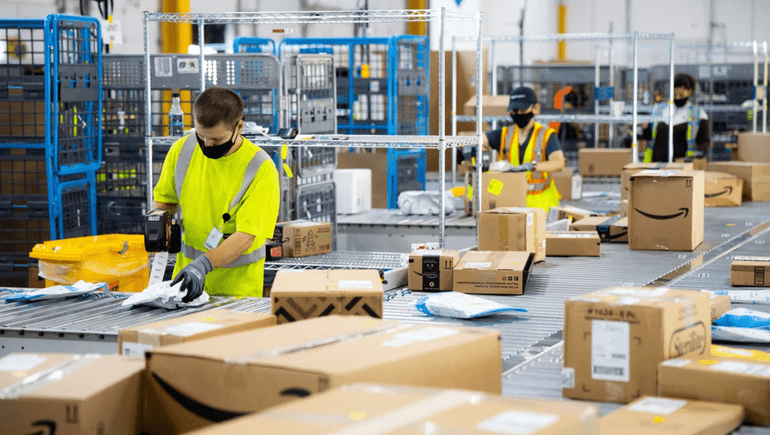Amazon, one of the world's largest online retailers, has recently announced the closure of more warehouses as part of its ongoing cost-cutting measures. The move has raised questions about the impact on both the company's employees and its customers. In this blog post, we'll explore why Amazon has decided to close more warehouses and what it means for those who rely on its services.
Amazon's History of Closing Warehouses
Since its launch in 1994, Amazon has been known for its expansive warehouse network that enables fast and reliable delivery of goods to customers. But over the years, Amazon has taken a number of steps to reduce costs, one of which is closing warehouses. In the past few years, Amazon has closed more than a dozen warehouses, with some of them shutting down as recently as this year.
The first wave of warehouse closures came in 2019 when Amazon shut down at least six locations. This included warehouses in New York, Pennsylvania, Maryland, Illinois, and California. The closures were part of Amazon’s larger goal to make its supply chain more efficient and reduce expenses.
In 2020, the company announced plans to close another eight warehouses across the United States. This included four warehouses in California, two in Illinois, one in Indiana, and one in Arizona. According to Amazon’s statement at the time, these locations were “surplus capacity” and not used frequently enough to justify keeping them open.
Amazon also announced plans to close seven more warehouses in 2021. This includes warehouses in California, Pennsylvania, Arizona, and Florida. All of these locations have been identified as excess capacity by Amazon and are being closed to streamline operations and save on costs.
Amazon’s history of closing warehouses shows that the company is willing to make difficult decisions to remain competitive and cut costs. Though these closures may cause temporary disruptions in service, they ultimately benefit both Amazon and its customers by helping keep prices low and delivery times fast.
The Impact of Closing Warehouses
Closing warehouses has a wide range of implications for Amazon and its sellers. When Amazon shuts down a warehouse, it can lead to delays in the delivery of items, which can have a negative effect on both buyers and sellers. Sellers may find that their goods take longer to reach customers, making it harder to maintain a high level of customer satisfaction. In addition, sellers may also have to bear the additional costs of shipping from another warehouse, which can further reduce their profits.
For Amazon, closing warehouses has both positive and negative effects. It can help the company save money in the short-term, but it also reduces the selection of goods that Amazon can offer. This could result in customers going elsewhere to shop for what they need, meaning Amazon could miss out on potential revenue. As such, Amazon needs to carefully consider the impact of any warehouse closures before making a decision.
Amazon's Other Cost-Cutting Measures
In addition to closing warehouses, Amazon has taken numerous other steps to reduce costs. One of the main ways that Amazon has cut costs is by tightening up the rules and regulations around sellers. Sellers are now required to adhere to a set of strict guidelines, and if they don't comply with them, they can be blocked from the marketplace. This has led to fewer sellers being able to access Amazon's marketplace, which has in turn reduced the amount of inventory available. Additionally, Amazon has tightened up its return policies, making it more difficult for customers to return items and reducing the cost of customer service. Finally, Amazon has begun offering more discounts on certain products, particularly those that are already discounted. These discounts have allowed Amazon to reduce its overall prices, which makes them more competitive. All of these cost-cutting measures have helped Amazon remain profitable despite the economic downturn.
Should Top Sellers on Amazon Worry?
If Amazon closes warehouses, it can have a significant impact on the operations of its third-party sellers who rely on those facilities for storing and shipping their products. With fewer warehouses available, it may become more difficult for sellers to efficiently fulfill orders and maintain inventory levels, which could ultimately result in delays and dissatisfied customers.
However, it's important to note that Amazon has a complex network of warehouses and fulfillment centers, and they may choose to close certain facilities while opening others in different locations. Amazon's decision to close warehouses is likely driven by a variety of factors, including changes in consumer demand and supply chain logistics, rather than just cost-cutting measures alone.
That being said, if top sellers are relying heavily on a specific warehouse that is scheduled to close, it may be prudent for them to proactively adjust their inventory management strategies and look for alternative options to ensure that they can continue to meet customer demand. It's always a good idea for sellers to diversify their storage and fulfillment options to mitigate risks associated with changes in Amazon's operations.

Comments
Post a Comment
Thank you for taking the time to share your thoughts with us. We appreciate your feedback and look forward to hearing your comments.